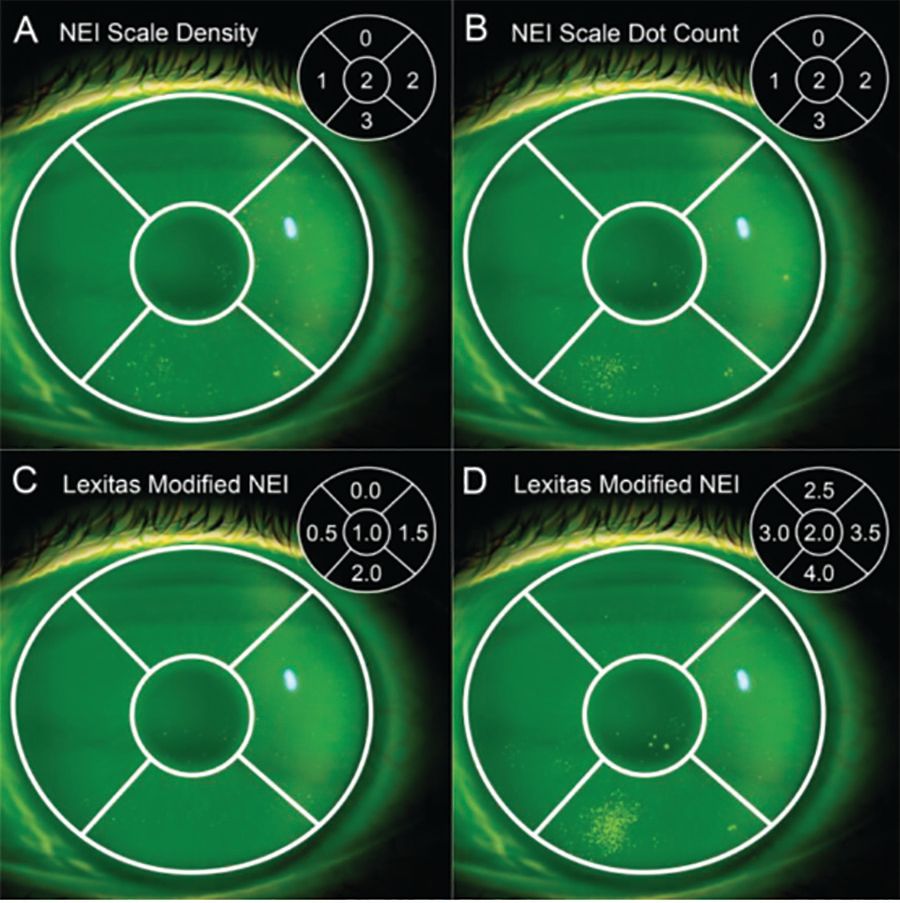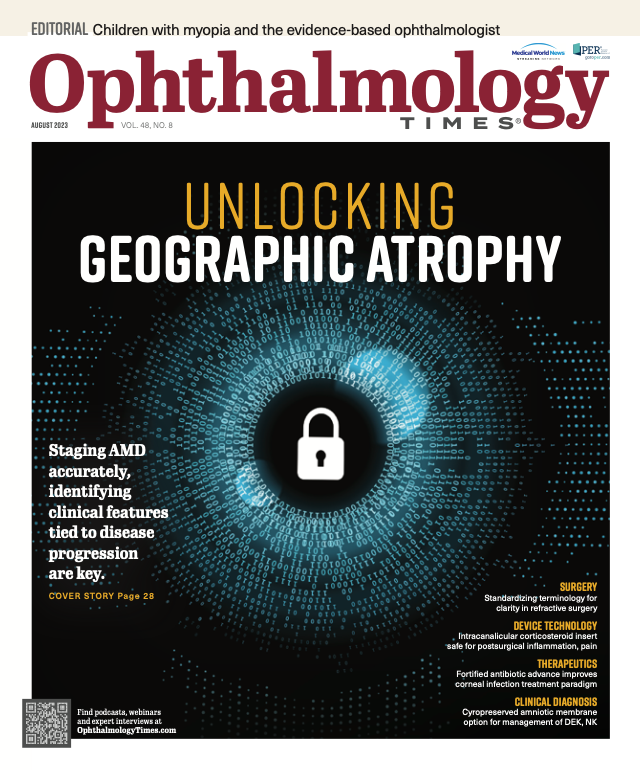Publication
Article
Digital Edition
Dry eye renaissance: Escalating cases meet with innovation
For clinicians, the evolution of treatment is as much a responsibility as an opportunity.
(Image Credit: AdobeStock/SymbiosisArtmedia)

Two decades ago, managing dry eye disease was straightforward. Practitioners were able to offer a few options: artificial tears, prescription cyclosporine ophthalmic emulsion (Restasis; Allergan), and punctal occlusion.
Since then, our options have multiplied. With novel treatments and diagnostics approved by the FDA and additional strategies in the pipeline, we’ve entered an era of innovative management for this common condition—a kind of dry eye renaissance.
Progress is essential because dry eye’s incidence is growing. Partly attributable to increased diagnostic skill, the spike is also driven by our population’s advancing age, irritants such as contact lens wear and extended screen time,1 and an awareness among patients that they don’t have to live with scratchiness, burning, or blurred vision. Results from a large US study confirmed this escalation, showing an increase in dry eye’s overall prevalence, annual prevalence, and incidence between 2003 and 2015.2
Fortunately, we now have the power to respond to this trend thoughtfully and comprehensively. Today, we can identify and address not only the symptoms of dry eye but its causes. We can reach patients who are uninsured or underinsured with an affordable generic formulation of Restasis.3 And we can improve the caliber of clinical trials by using precision diagnostics to standardize end point analyses.
For clinicians, the evolution of dry eye management is as much a responsibility as an opportunity. Only by staying informed about the growing spectrum of products can we do our best to manage this intractable condition.
Treatment timeline
Since Restasis was introduced in 2003, anti-inflammatory drops have been at the heart of dry eye management. Over the past 7 years, the category has diversified with FDA approvals of a high-concentration cyclosporine ophthalmic solution (Cequa; Sun Ophthalmics); lifitegrast ophthalmic solution (Xiidra; Novartis), an antagonist that blocks LFA-1; and loteprednol etabonate ophthalmic suspension (Eysuvis; Kala Pharmaceuticals), a topical corticosteroid.
But the latest treatments don’t address inflammation, focusing instead on other drivers of dry eye. The nasal spray varenicline solution (Tyrvaya; Viatris) is a partial nicotinic receptor agonist that stimulates the secretory nerves, causing the release of aqueous from the lacrimal gland to stimulate the production of tears. Perfluorohexyloctane ophthalmic solution (Miebo; Bausch + Lomb, Novaliq), approved in May 2023, is a nonaqueous topical that prevents tears from evaporating. In 2 large phase 3 trials, the drug significantly reduced the signs and symptoms of dry eye in patients with a history of the condition and clinical indications of meibomian gland dysfunction.4
Cyclosporine ophthalmic solution (Vevye; Novaliq), formerly CyclASol, was approved inJune 2023. Free of water, preservatives, oils, and surfactants, cyclosporine ophthalmic solution is designed to offer early and durable efficacy for patients.
Of course, medications are not the only option for managing meibomian gland dysfunction. FDA-approved devices include OptiLight (Lumenis), which uses intense pulsed light therapy; LipiFlow (Johnson & Johnson Vision), a thermal pulsation system; iLux (Alcon), which applies compression and light-based heat; and the TearCare System (Sight Sciences) for heat and gland expression.
Additional treatments with unique mechanisms are on the horizon. Topical formulations being investigated in phase 3 clinical trials include:
BRM421 (BRIM Biotechnology), a synthetic peptide that sparks tissue regeneration and corneal repair, reduces inflammation, and improves tear quality
Reproxalap (Aldeyra Therapeutics), a reactive aldehyde species inhibitor that reduces inflammation
SI-614 (Seikagaku), a modified hyaluronate that stabilizes the tear film and promotes corneal wound healing
Tivanisiran (Sylentis), a small interfering RNA that controls pain and inflammation by inhibiting the synthesis of TRPV1
Visomitin (Mitotech), a cardiolipin peroxidation inhibitor that sustains and restores mitochondrial function to target inflammation, corneal damage, tear deficiency, and gland tissue regeneration
Diagnosis precision
Without precise diagnostic tools, practitioners would be unable to provide personalized treatment. The old standby is the Schirmer test, which determines whether eyes are underproducing or overproducing tears. But tear film can now be analyzed with InflammaDry (Quidel), which detects an inflammation-linked enzyme, MMP-9, to identify patients who may benefit from anti-inflammatory therapy. Also available are the ATD TearScan 300 microassay (Advanced Tear Diagnostics), which identifies dry eye by measuring lactoferrin and IgE levels in tears, and the Osmolarity System (TearLab), which measures the aqueous content of the tear film by checking for heightened electrolytes.
Experimental diagnostics are promising. TeaRx technology (DiagnosTear) performs a multiparameter assay on a tiny tear sample to make a differential dry eye diagnosis. This 10-minute assay could become the first available at the point of care.
Other strategies may help standardize clinical trials. BEDx (Boston Eye Diagnostics) is an imaging technology that captures clear photographs of corneas stained with fluorescein and other images of the ocular surface. In an automated and repeatable manner, the device takes several pictures and then volume averages them to create an image that is in focus across multiple depths. The system’s objectivity may help level the grading of corneal staining photos.
Figure. Corneal staining. (Image provided courtesy of Lexitas Pharma Services, Inc.)

Standardized grading may also be supported by a modified version of the National Eye Institute’s corneal fluorescein staining scale (Figure). In a recent study, researchers at Lexitas introduced a modified scale to support more reliable and repeatable assessment methodology for examiners.5
A practice-changed trend
The dry eye renaissance has changed not only our armamentarium but the way we provide care. Because managing the condition is often time consuming, many practices are opening dry eye centers6 that accommodate diagnosis and treatment without affecting other clinic scheduling. Their services include cash pay therapies such as LipiFlow, vitamins, and artificial tears for patients seeking care beyond what their insurance will cover. Cataract surgeons have also enhanced their focus on dry eye management,7 because resolving symptoms before a procedure can support the accuracy of refractive calculations and limit postsurgical discomfort.
There’s no doubt that advances in dry eye management and diagnosis are making a difference for patients, but questions remain. Can issues such as diet8 and climate exacerbate dry eye? Should lifestyle recommendations such as better hydration and turning off ceiling fans be part of our treatment plans? Answers are sure to emerge as we pursue further research, building on today’s advances with next-level discoveries about this multifactorial condition.
References:
Karmel M. A quick guide to dry eye. American Academy of Ophthalmology. June 2014. Accessed June 9, 2023. https://www.aao.org/eyenet/article/quick-guide-to-dry-eye
Dana R, Bradley JL, Guerin A, et al. Estimated prevalence and incidence of dry eye disease based on coding analysis of a large, all-age United States health care system. Am J Ophthalmol. 2019;202:47-54. doi:10.1016/j.ajo.2019.01.026
FDA approves first generic of Restasis. News release. FDA. February 2, 2022. Accessed June 9, 2023. https://www.fda.gov/news-events/press-announcements/fda-approves-first-generic-restasis
Bausch + Lomb and Novaliq announce FDA approval of MIEBO (perfluorohexyloctane ophthalmic solution) for the treatment of the signs and symptoms of dry eye disease. News release. Bausch + Lomb. May 18, 2023. Accessed June 9, 2023. https://tinyurl.com/559t9pxv
Sall K, Foulks GN, Pucker AD, Ice KL, Zink RC, Magrath G. Validation of a modified National Eye Institute grading scale for corneal fluorescein staining. Clin Ophthalmol. 2023;17:757-767. doi:10.2147/OPTH.S398843
Cole J. How to build a dry eye center of excellence. Review of Optometry. September 14, 2014. Accessed June 9, 2023. https://www.reviewofoptometry.com/article/ro0914-how-to-build-a-dry-eye-center-of-excellence
Mukamal R. Don’t let dry eye derail cataract surgery. American Academy of Ophthalmology. May 20, 2022. Accessed June 9, 2023. https://www.aao.org/eye-health/tips-prevention/dry-eye-cataract-surgery-ocular-surface-disease
Sanford K. Diet: why dry eye hangs in the balance. Review of Optometry. May 15, 2020. Accessed June 9, 2023. https://www.reviewofoptometry.com/article/diet-why-dry-eye-hangs-in-the-balance

Newsletter
Don’t miss out—get Ophthalmology Times updates on the latest clinical advancements and expert interviews, straight to your inbox.




